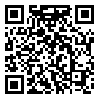BibTeX | RIS | EndNote | Medlars | ProCite | Reference Manager | RefWorks
Send citation to:
URL: http://ijn.iums.ac.ir/article-1-516-en.html
Background and Aim: Nowadays, the role of regular and continuous physical activity in reducing the risk of coronary heart disease, various cancers, obesity, osteoporosis and other health problems has been widely recognized. Physical inactivity as a modifiable risk factor for a number of diseases has become a key public health concern. Many investigations have showed that physical activity levels fall significantly during the young adult period, and there is increasing concern about youth physical activity. Physical activity of the university students, as an important sector of young adults and society from which would-be policy makers and teachers will be drawn, are of particular interest. The present study was carried out to compare physical activity status among students of medical and non-medical universities of Tabriz.
Material and Method: A descriptive comparative design was used with 384 medical and 384 non-medical university students. Demographic data and physical activity variables were collected by a self reported questionnaire. Independent sample t-test were used to compare mean scores of physical activity between two groups of students, and two-way ANOVA test were used to determine the relationship between students' socio-demographic variables and physical activity.
Results: The findings showed that 39.84% of medical and 37.24% of non-medical university students had risky physical activity status and only 6.51% of medical and 5.99% of non-medical university students had appropriate physical activity status. There was no statistically significant difference between mean scores of physical activity of two groups. Also, 81.3% of medical and 85.2% of non-medical university students desired to increase the level of their physical activity.
Conclusion : Although the majority of both medical and non-medical students had inactivity style, there was desire to increase physical activity level. It is necessary that the university policy makers provide programs to aware the students about inactivity risks, establish motivation and allocate possibilities for increasing the students’ physical activity levels. Modifying attitude and practice toward physical activity and physical exercise in university students, especially in medical university students as the community health messengers, is crucial in promotion of mobility and physical exercise of community.
Received: 2009/02/9 | Accepted: 2014/08/25 | Published: 2014/08/25
| Rights and permissions | |
 |
This work is licensed under a Creative Commons Attribution-NonCommercial 4.0 International License. |




